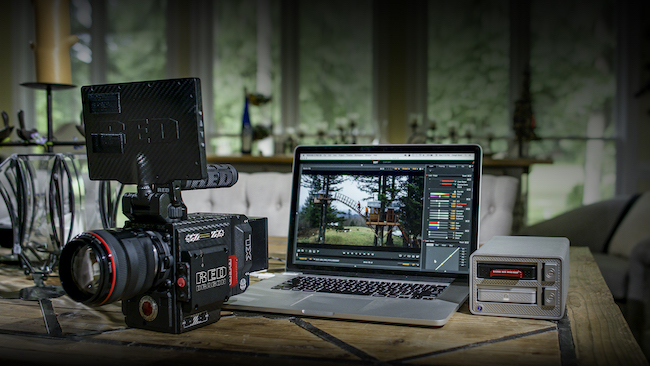

RedShark Replay: With Sharp's recent announcement, 8K is becoming more commonplace much faster than previously thought. Recently we've been working with RED and G-Technology to look at some of the issues surrounding working with greater than 4K resolutions. This time, we're looking at workflows.
First of all, let’s look at why you might want to work in 8K.
Of all the possible reasons, the least likely one right now is that you’re going to show your work in 8K resolution. Options for 8K display are extremely limited. This will change, and no-one knows how quickly. (Everyone said when 4K came out it would be decades before it was in common use and now 90% of the TVs in the shops are 4K.) But now that you can shoot in 8K, it makes sense to preserve that extreme resolution as long as you can. Why? Because everything derived from your 8K “master” will look better, from cinema all the way down to a YouTube video viewed on a smartphone.
8K has a certain “smoothness” that virtually eliminates aliasing and other digital artefacts. But it’s sharp, too. If you need to reframe your shot, 8K lets you do that without any visual loss. What’s more, 8K captures the “look” of a lens or a cinematic technique better than lower resolutions. Sometimes you need detail to capture the “feel" of a set-up.
With 8K, there’s a lot of data, but it’s manageable, especially if you plan around it, especially with capable storage. Choose your acquisition codec well too. REDCODE can be visually lossless. At 8K, a single uncompressed frame can occupy 210 MB. With the same frame in RAW R3D, it's only 10MB.
If you get this stage right, your 8K workflow needn’t be much different from other workflows at lower resolutions.
Let's look first at preparation. Eliminate any footage that you’re never going to use. There’s no point in keeping this stuff. Or is there? Because now, if you're shooting in 8K and delivering in 4K or less, you'll be able to crop the picture to eliminate the objects you don't want in the shot - without any visible quality loss. Now you can get rid of that boom, the focus-puller's feet, and that Boeing 787 Dreamliner that doesn't look quite right in your period drama.
And then, as soon as you can, log your footage. This will not only make it easier to edit because you’ll be able to find shots faster, but you’ll have a much better idea of what you need in your system at any one time. As your work progresses, you may find that there are swathes of footage you’re not going to use because of previous editorial decisions. Any time spent logging is easily paid back during the edit, and with RED files, you can add a host of a host of other information to assist down the line.
So how do you edit and post produce your 8K material? It's not always necessary. Most modern NLE software is able to work with proxy resolutions so that you can edit with, say 4K or HD material and simply reconform at the end of the project. You’re almost certainly not going to have an 8K monitor in your editing or grading suite, so you’re not going to lose anything by working in 4K. All of which means that working with 8K is virtually the same as post producing 4K or less.
This might sound a bit cavalier. Can it really be the true that it’s no harder working with 8K than 4K? Well, yes. If you’re taking the proxy route, you could be editing an “8K” production on a three year old laptop. But with the right codec, it's entirely possible to work natively in 8K.
So - a post production workflow based around proxies is very similar to “conventional” workflows, with the additional re-conform stage at the end of the process. Or you simply work in native 8K using RED's codec.
But you will still need additional storage, and you’ll need fast storage.
RED has partnered with G-Technology to create the ev series RED Mini Mag reader, an adaptor for RED media that allows to transfer your footage to G-Technology ecosystems. G-Technology’s Studio XL comes in sizes up to 60TB and for shared storage, the G-Rack is a NAS (Network Attached Storage) with up to 500GB, that’s simple to set up and manage.
Remember: 8K is no longer experimental. It’s here and now and eminently usable with the right equipment and the appropriate amount of planning.
RED and G-Technology 8K solutions are available for you to buy and use in your projects today.
Visit RED here
Visit G-Technology here
Tags: Production


Comments